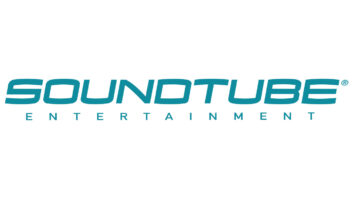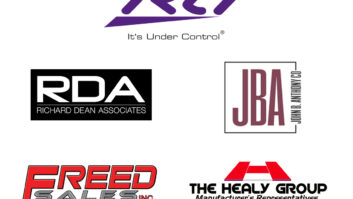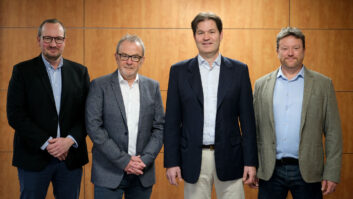Port Washington, N.Y. – Big, flat and mobile were the overwhelming consumer choices during the first official week of the holiday selling season with overall sales up 11.8 percent, according to The NPD Group.
The research firm’s Black Friday report, which encompasses the period of Nov. 19 to Nov. 25, confirmed what all the holiday shopping circulars promised: that large, flat-panel screen TVs would strike a chord with customers and drive them into stores by the truckload. Black Friday 2006 also saw retailers for the first time attempting to integrate their online and brick-and-mortar strategies, while dealing with Web sites that prematurely announced their big Black Friday promotions.
Despite all the advertising hoopla and the decent-size crowds that gathered outside stores in the pre-dawn hours of Nov. 20, the opening week of holiday sales was, “good, but not great,” said Steve Baker, NPD’s VP of industry analysis.
“In other words, they came, they bought what they really wanted and then they left without buying much else,” Baker said in the report.
NPD noted that 2006 was the first year retailers started linking their brick-and-mortar and online Black Friday strategies. Some, like Wal-Mart, Circuit City and Best Buy, posted on Thanksgiving Day, what Black Friday specials would be available in stores. Some of these last-minute blowouts were caused by the exposure on the Web of the retailers’ Black Friday circulars by third-party sites, forcing the companies to come up with something new.
Baker said leaking the information might anger retailers, but it helps create the steady buzz necessary to help drive store traffic.
Retailers do need to make some changes going forward, NPD said, such as giving more information on limited quantities or if Web-only price specials could be ordered online, but picked up in at the local store. The practice of having Web-only deals seemed counterproductive to Baker, since the whole idea behind Black Friday specials is to drive people into the store where they might be inclined to pick up something beside what was on sale.
This proved true this year as consumers primarily bought out the specials while ignoring everything else.
The primary items missing from shopper’s baskets were accessories and peripherals. Baker blamed this omission on market saturation, saying that since people might be buying their second or third notebook or MP3 player they already owned the necessary extras.
Overall, CE sales were up almost 12 percent, to $2.09 billion, but this was a little short of last year’s 15.4 percent and did not even reach the 12.4 percent posted in 2004, he said. The report indicated that consumers were interested in a relatively narrow list of product categories, with the top five categories accounting for 45 percent of all sales. In 2005 the top five were responsible for only 35 percent of sales. These favorite products were LCD TV, notebook computers, digital cameras, plasma TVs and MP3 players.
What did grow in 2006 was unit volume, or the total number of items purchased. It was up 3 percent from 1.5 percent last year. In addition, the average amount spent per purchase was up 8 percent, to $82.50. Baker said that while these figures are a good sign it was caused by shoppers hitting stores simply to buy their big-ticket purchases.
LCD and plasma TVs door-buster deals provided the main draw for most chains and customers did not leave empty handed. NPD estimates 1 million were sold during this period, a 25 percent increase over last year. LCDs with screens larger then 30 inches saw revenue grow more 208 percent, with unit sales jumping 297 percent. Smaller LCDs also sold well, with 86 percent unit growth, but the average selling price (ASP) fell to $262. Revenue growth was limited to 25 percent.
The above normal price reductions that had taken place leading up to Black Friday were enhanced by a final burst of discounting of several hundred dollars, which brought prices down to almost half of what they were in 2005, Baker said. LCDs priced at $3,092 last year were $1,481 this year.
Certain plasma models started to become seriously squeezed by their LCD cousins this season, with the ASP for a 42 inch at $1,192, or just $300 less then the same size LCD and only $100 above a 37-inch LCD. However, several retailers used 50 inch and larger size plasma TVs to counterbalance the low-priced smaller models. In 2006, 50-inch plasmas represented 30 percent of all TV sales volume, compared with 12 percent a year ago.
Even with pricing getting close to parity between LCD and plasma the latter models still outsold LCD by about 50 percent in the 40-inch and 42-inch screen sizes.
Microdisplay sets may not have had an honored place in the Black Friday circulars, but Baker said through low pricing —ASPs dropped about $600 from 2005 — and decent availability, the category grew by 60 percent. DLP microdisplay product was the clear winner for the category, enjoying a 100 percent increase in sales and 50 percent hike in revenue, the report said.
NPD found home audio sales were flat, but this was better then the loss endured in 2005. Entry-level home theater systems were missing from their usual prominent place in the holiday circulars, instead, speakers and receivers managed to post decent increases this year. ASP also increased for amplifiers and tuners.
The same hit-and-run shopping mentality infected IT product sales. Customers came looking for inexpensive notebook computers, LCD monitors and a few other big-ticket items, but former Black Friday mainstays like desktop computers were flat or slightly down. IT sales overall were up 3.3 percent, well off the 8.9 percent increase generated in 2005.
Despite the hype surrounding flat-panel television, notebook computers were still the most sought after item on shopping lists and this can be seen in the category’s 63.7 percent unit growth, well above the 16.2 percent mark hit last year. However, growth may have been hindered to some extent because retailers could not slash pricing across the board because prices were already near rock bottom even before Thanksgiving. NPD found prices were trimmed about 15 percent for Black Friday, less then the 19 percent cut made in 2005.
Desktop computers, once one of the more heavily promoted items on Black Friday, made little noise this year. Baker said some vendors and retailers attempted to inspire sales by bundling large screen size LCD monitors with their PCs, but this tactic was somewhat thwarted by the continued decline in LCD monitor pricing, which effectively devaluated the proposition.
Some LCDs were being advertised for a new low of $130, with ASPs in the $190 range, down from $300 last year. Even larger screen models, 20 inches and up, featured $280 ASPs, down $200 from just a few weeks earlier.
Baker was not surprised that desktops managed to almost maintain their sales figures from last year. The entry-level part of the business is still very strong, he noted, and a person still gets a lot of bang for their buck, something that is missing from the notebook market where the low-end models are not feature rich.
There is a strong chance for desktops to regain some of their former glory next year. Microsoft’s Vista operating system could spur desktop sales next year, at least once it is out and the general public begins to understand its capabilities.
“I’m optimistic on desktops for the second half of 2007 and going into 08. If the market is serious about convergence you need a good desktop. A notebook just doesn’t work for this,” Baker said.
Two IT products which proved to be winners were external hard drives and USB thumb drives.
“External hard drives delivered over 100 percent unit and dollar increases this year while pricing fell to $114 on average from $139 in 2005 and $160 two years ago,” Baker said.
NPD said that during Thanksgiving week more then 1 million USB drives were sold with 60 percent of those sold being 1GB models and 25 percent 2GB.
The printing segment was mixed with multifunction printers showing healthy growth of 76 percent, but only by sacrificing almost 50 percent of its ASP. Photo size printers also put up positive numbers with unit sales growing 9.5 percent, down from the 34.8 percent growth posted in 2005, but these products managed to maintain a higher proportion of their ASP, falling only $25 year over year.
Digital cameras captured a good portion of Black Friday sales. Revenue increased more than 13 percent and units were up 26 percent compared with 2005. The average price of a digital camera dropped to around $163 compared to the average $182 consumers spent in 2005.













